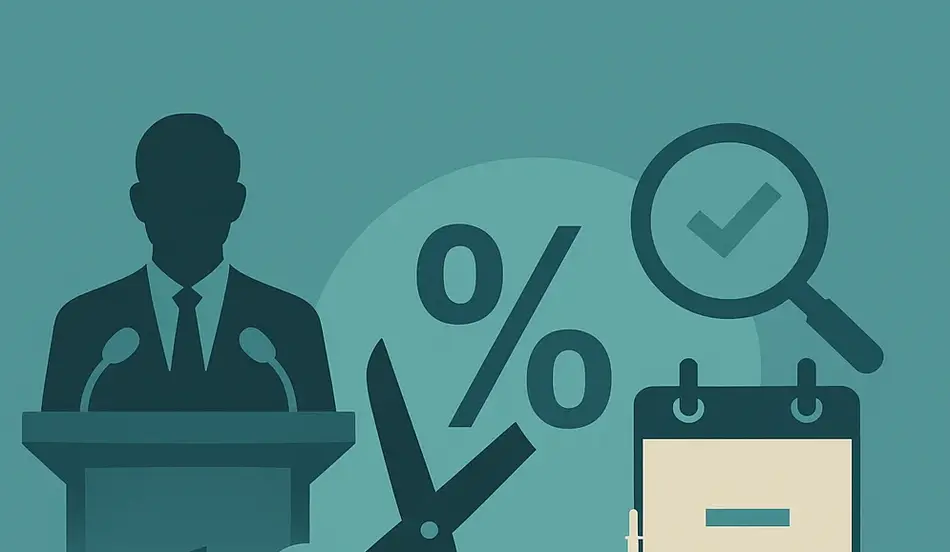Treasury Secretary Scott Bessent suggested overnight that the Federal Reserve should remain open to a 50-basis-point interest rate cut at its September meeting, citing slowing payroll growth, tight credit conditions, and the need to align borrowing costs with economic fundamentals.
The remarks came amid continued debate over U.S. trade policy and questions about the accuracy of monthly labor market data. Speaking alongside Joe Lavorgna, counselor to Bessent, officials defended the administration’s recent 15% export tax on Nvidia chips — a measure they say protects national security while securing U.S. industry in ongoing negotiations with China. Bessent indicated the policy could serve as a model for other industries, sparking debate over whether the move represents a broader industrial policy shift.
Table of Contents
Rate-Cut Rationale and Fed Policy Debate
Lavorgna argued that the Fed’s benchmark rate remains well above neutral and even higher than the most hawkish forecasts on the central bank’s own “dot plot.” He cited weak housing, auto, and manufacturing data as evidence that monetary policy is overly restrictive.
Critics have raised concerns that political pressure could influence future Fed leadership, with reports suggesting the White House is considering multiple potential successors to Chair Jerome Powell. Lavorgna countered that lower rates are consistent with market signals, noting that the 10-year Treasury yield has been trading below the fed funds rate for years — an indicator that policy may be too tight.
Hire Strategically as Rates Shift
Post your job on WhatJobs and connect with top talent—position your business for growth before the next rate cut.
Post a Job Now →Labor Data Integrity Under Scrutiny
The discussion also turned to the Bureau of Labor Statistics (BLS) and the reliability of its monthly jobs reports. Officials stressed the need for more accurate and timely data, pointing to a pattern of large revisions that undermine public confidence.
Lavorgna emphasized that while quarterly figures are generally more reliable, the magnitude of recent monthly revisions raises statistical concerns, not necessarily political interference.
Balancing Trade Policy and Business Confidence
On trade, Lavorgna defended the Nvidia export tax as a national security measure, despite criticism from free-market advocates. Bessent has framed the levy as part of a holistic approach to economic and security policy, though some analysts warn it could signal a wider embrace of targeted industrial policy.
Asked about the President’s combative style toward business leaders — including public criticism of Wall Street executives — Lavorgna described it as “non-conventional” but “highly effective,” arguing that U.S. growth and tight credit spreads show that the administration’s economic strategy is delivering results.
FAQs — Fed Policy, Trade, and Data Debate
1. Why is Treasury Secretary Bessent calling for a possible 50-basis-point rate cut?
He believes the Fed’s current policy rate is too restrictive given slowing payroll growth, soft housing and auto sales, and bond market signals that suggest rates are above neutral.
2. What is the controversy over the Nvidia export tax?
The administration imposed a 15% export tax on Nvidia chips, citing national security. Critics say it’s industrial policy by another name, but Bessent argues it could serve as a model for other sectors.
3. Are monthly jobs numbers being manipulated?
Officials deny political tampering but acknowledge that frequent and large revisions have raised doubts about accuracy. They advocate modernizing data collection to improve reliability.
4. Could political pressure affect Fed independence?
With speculation over Jerome Powell’s eventual replacement, some worry about a more dovish Fed. The administration says lower rates align with economic fundamentals, not political interference.




